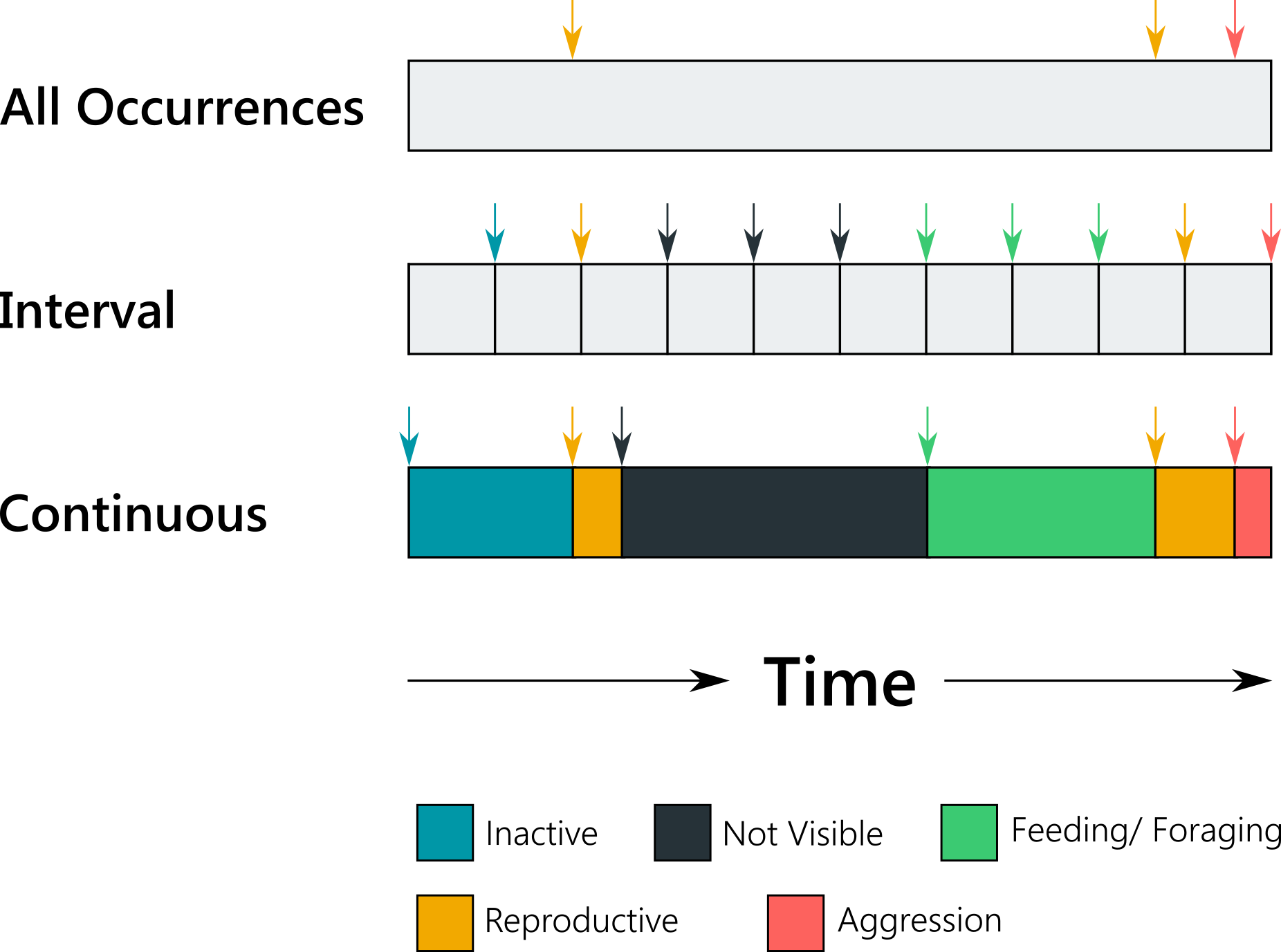The Basics
ZooMonitor has two modules to record behavior data: Behavioral Observations for recording systematic data using standardized sampling methodologies, and Instantaneous Observations for recording a single time-point assessment. Using the Behavioral Observations module, you can record behavior data using any combination of three common sampling methodologies: All Occurrences, Interval, and Continuous. Although others have referred to these methods using different names (c.f. Altmann, 1974; Martin and Bateson, 2007), these methods broadly refer to scoring any occurrence of a behavior (i.e. all-occurrences), scoring the duration of a behavior (i.e. continuous), and scoring behavior during instantaneous time-points that occur at fixed intervals (i.e. interval).

A visual depiction of the sampling methodologies available in ZooMonitor.
In ZooMonitor, you will set up separate channels to record behavior using these methods. Broadly speaking, a channel refers to any separate piece of information you are recording. As the different recording methods (i.e. all occurrence, continuous, and interval) are all scored independently, these would each be different channels. If you are interested in tracking multiple behavior categories (e.g. general activity, proximity, space use, etc.), you can also set up multiple continuous and interval channels as well. This flexibility allows you to either create simple projects with one or two channels to record behavior for a group of animals, or to create complex projects tracking many different behaviors for a focal animal. If you are new to creating behavioral observation projects, it may be useful to check out Sampling Recommendations.

